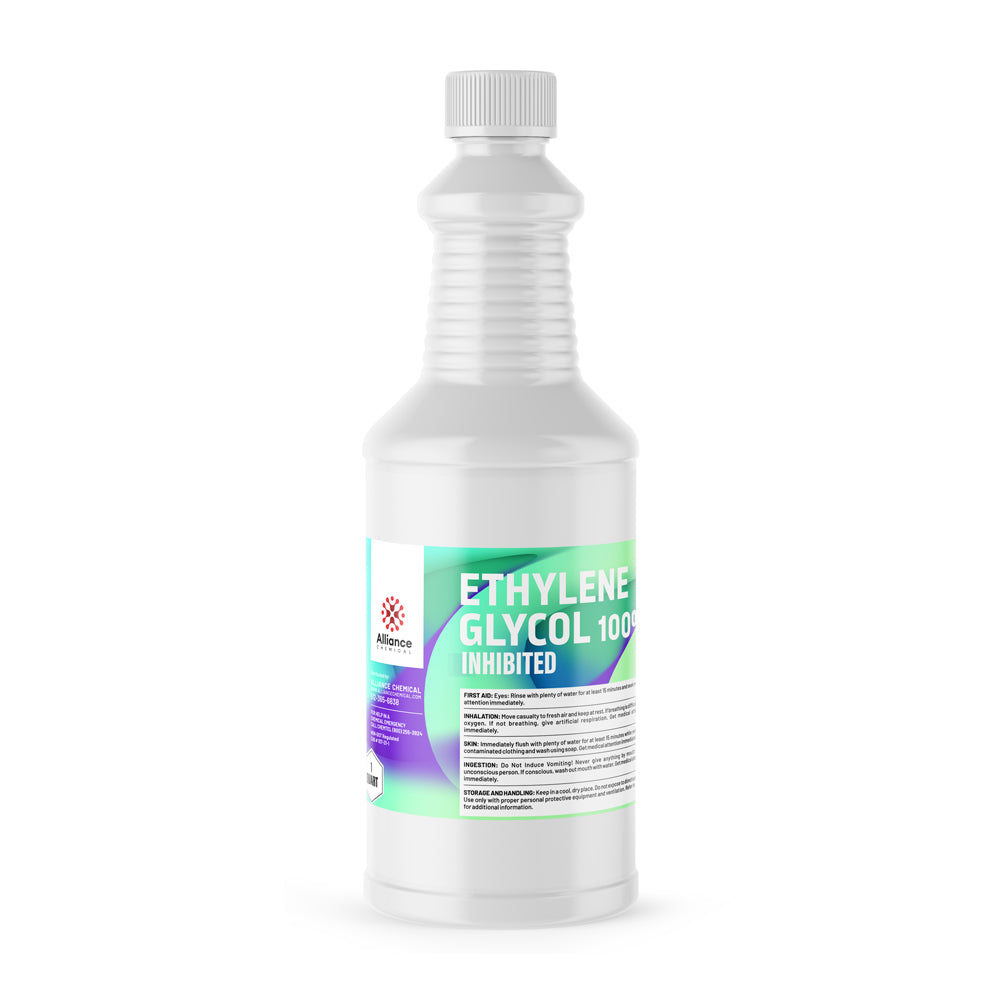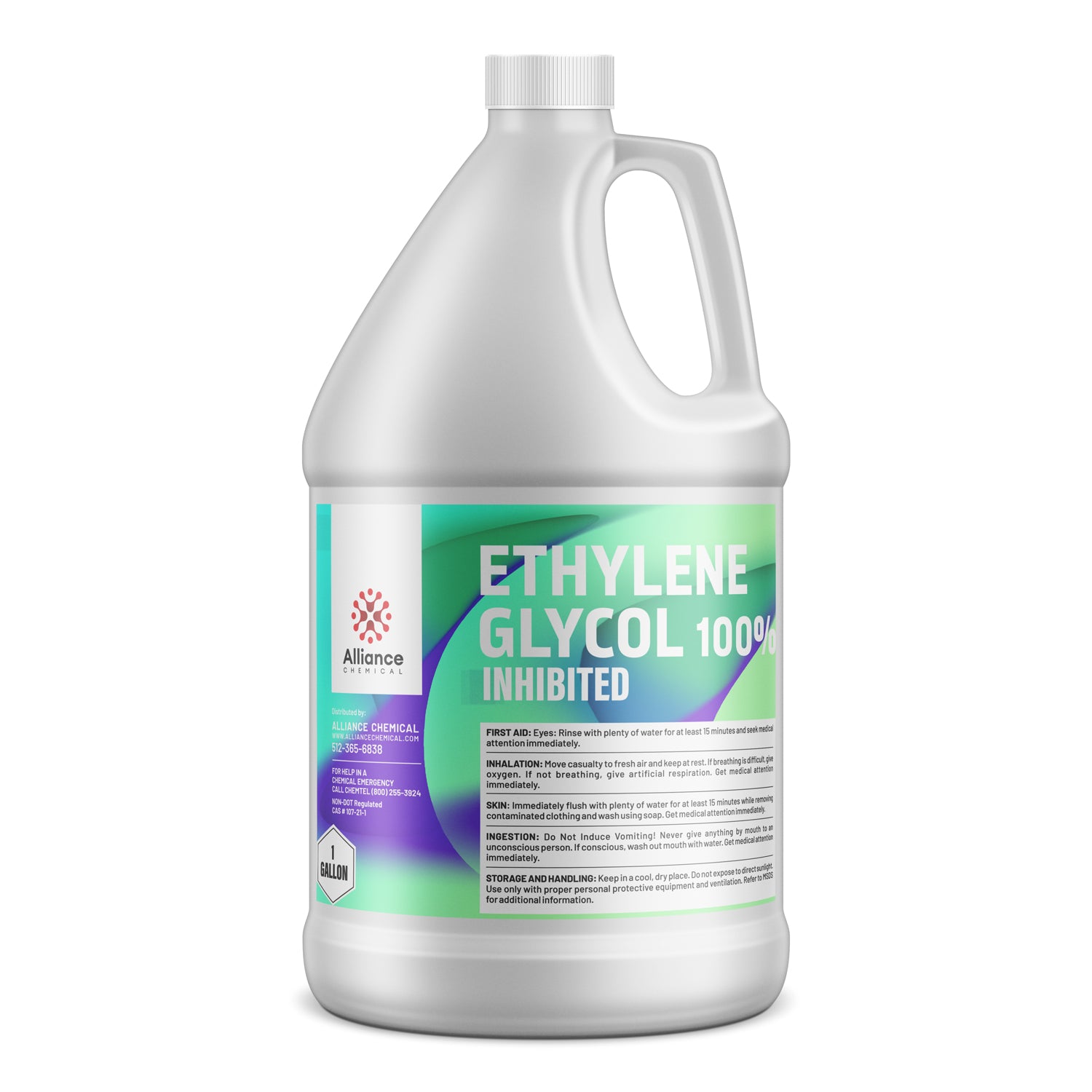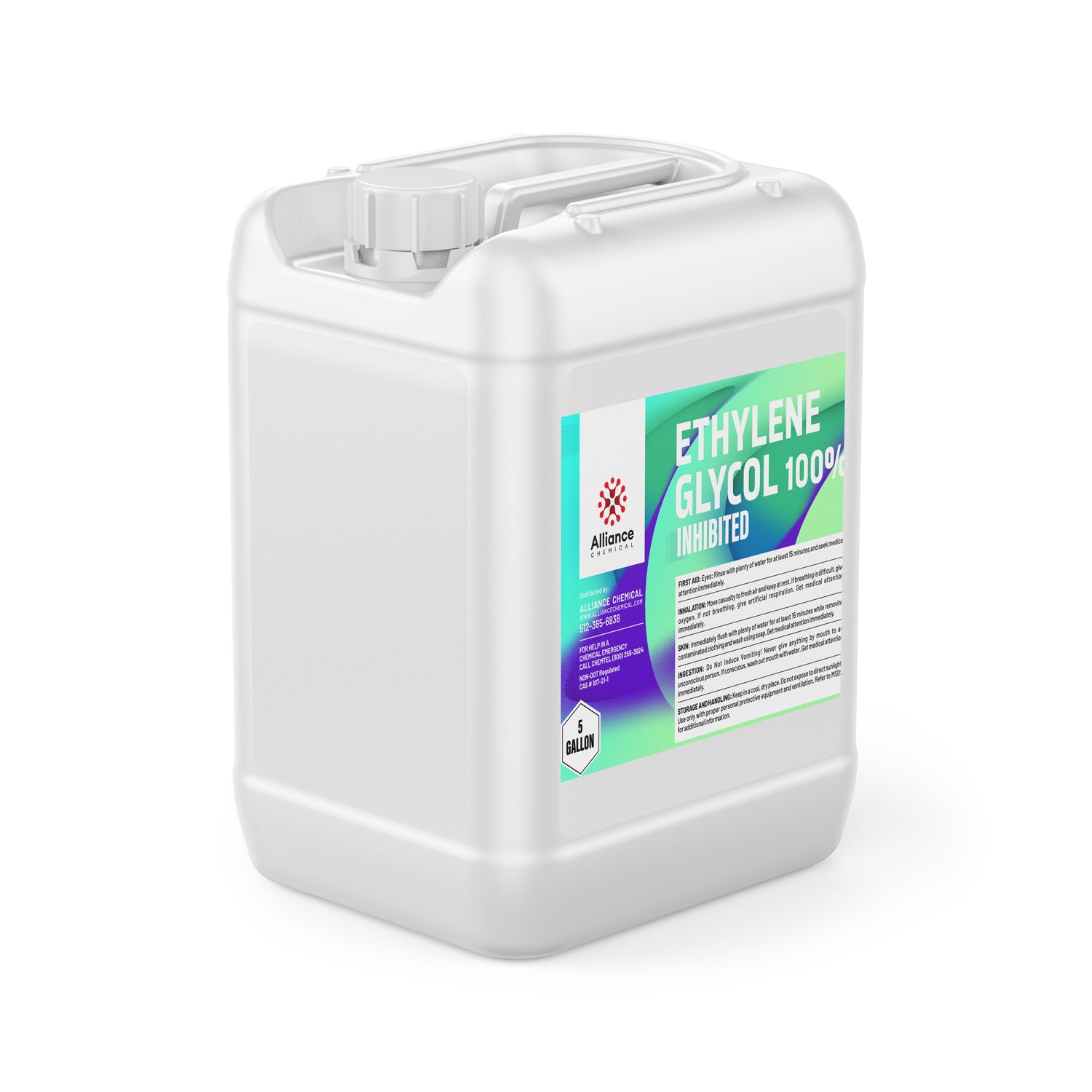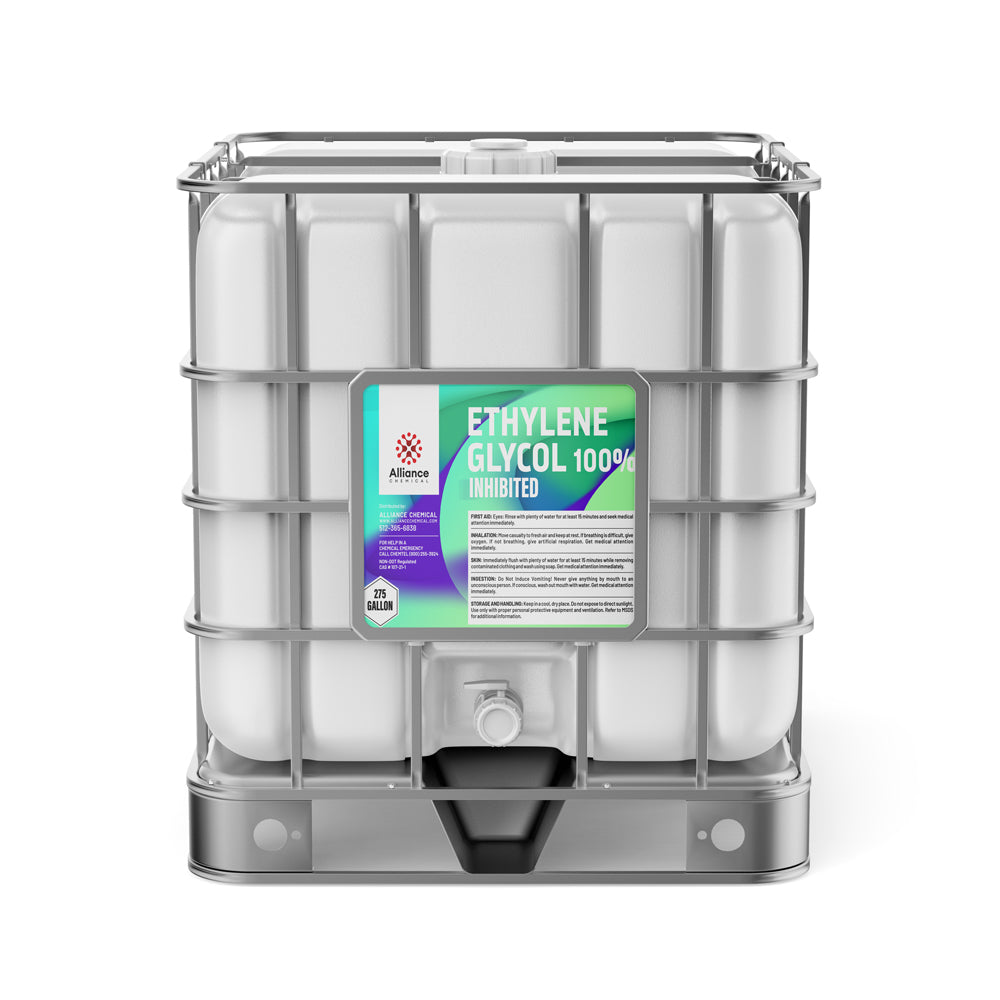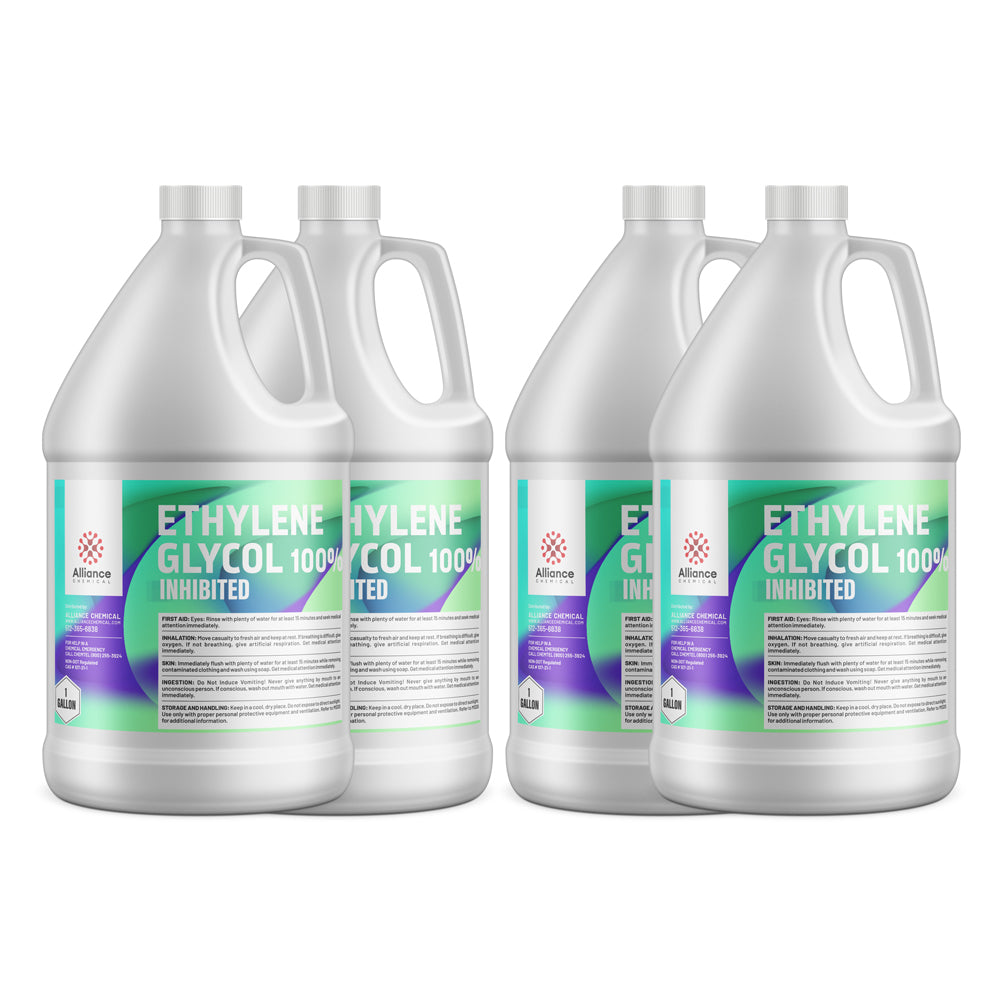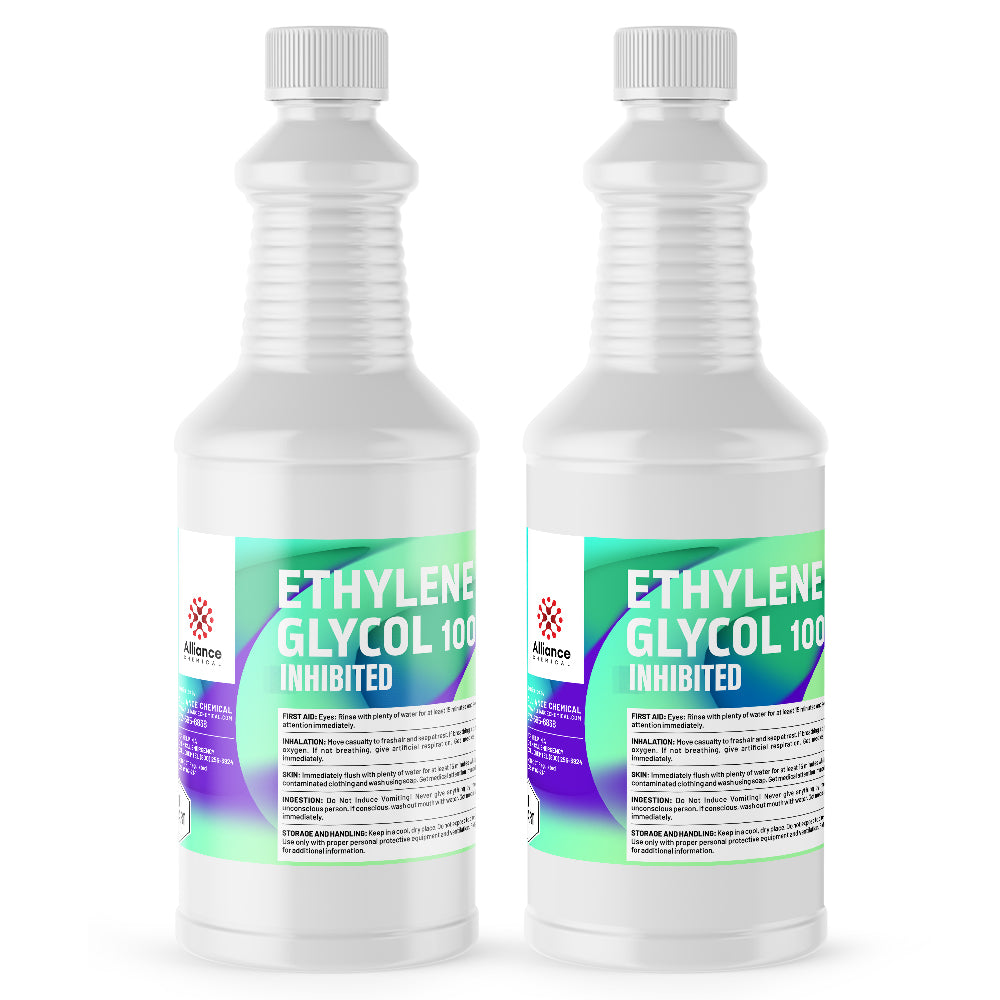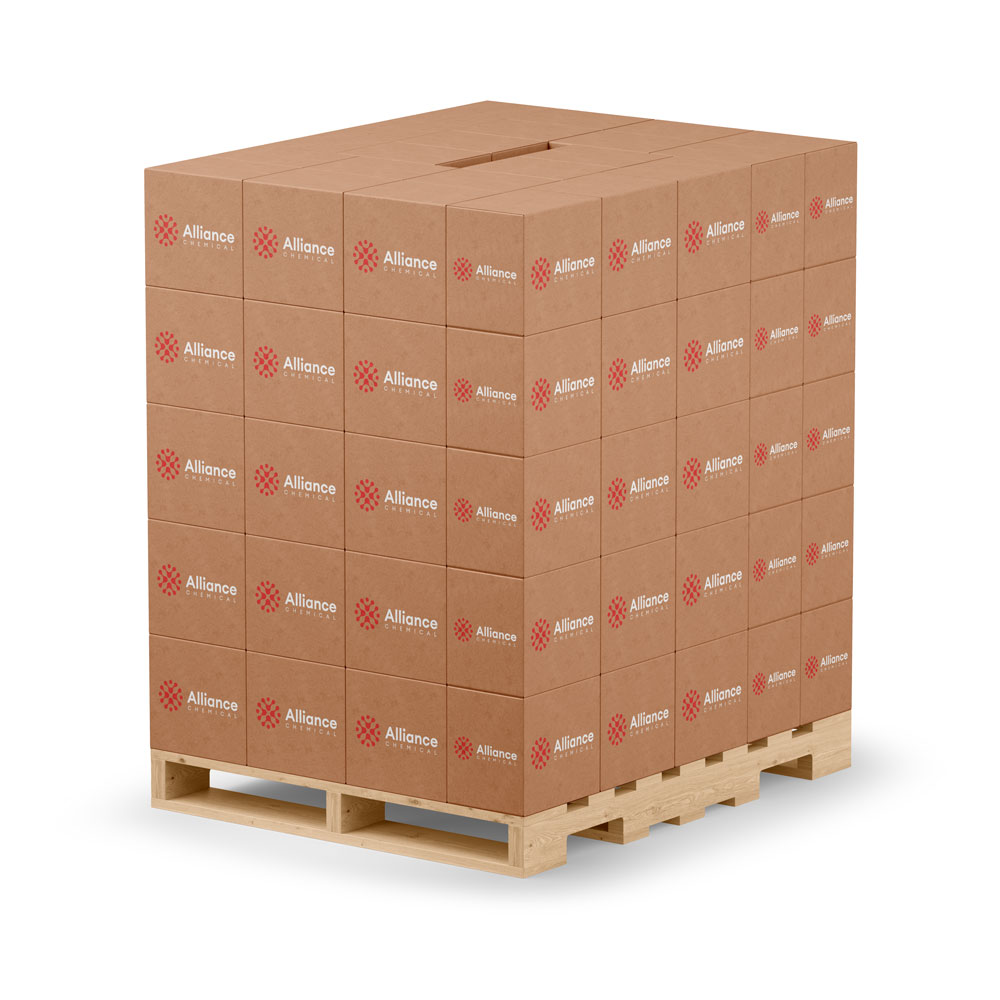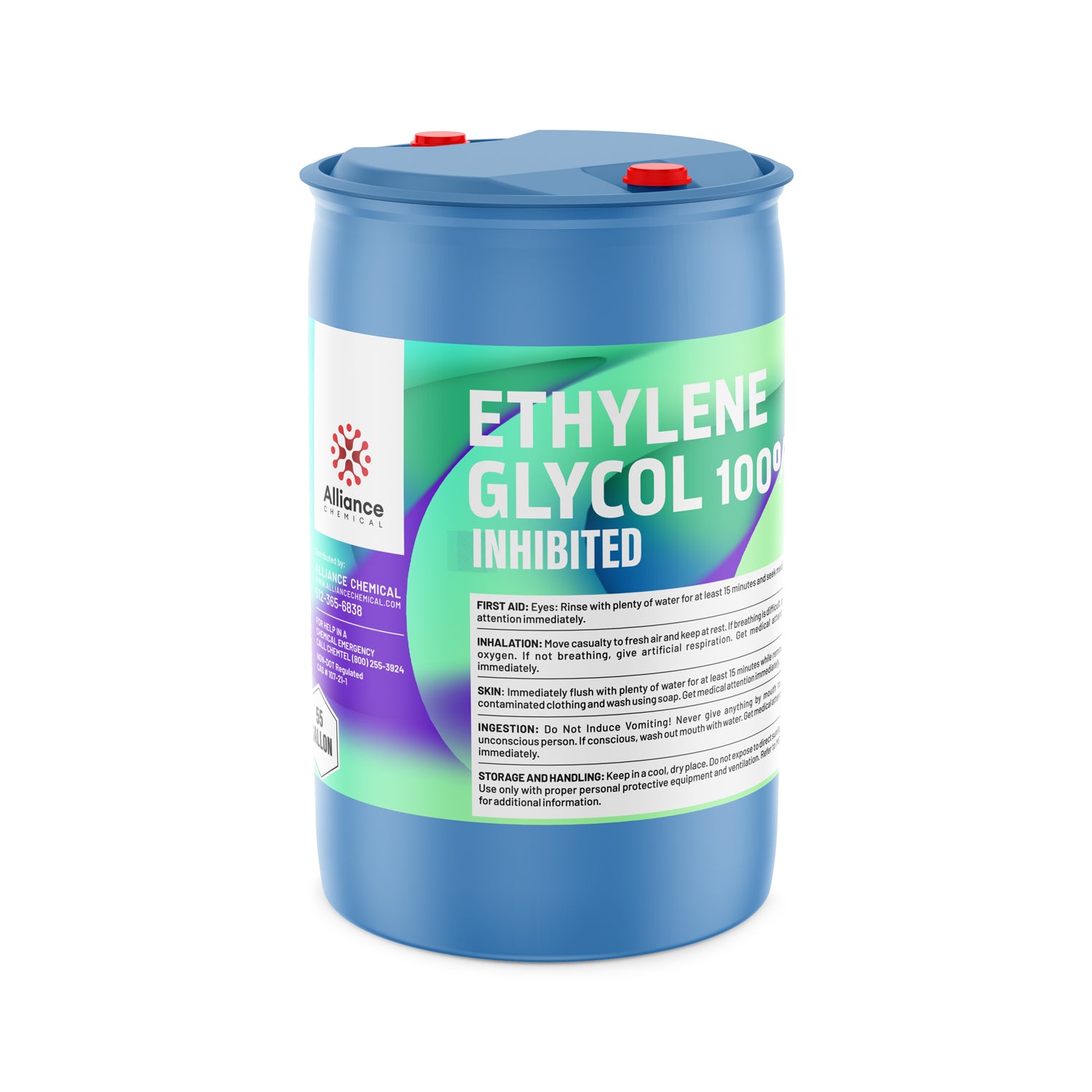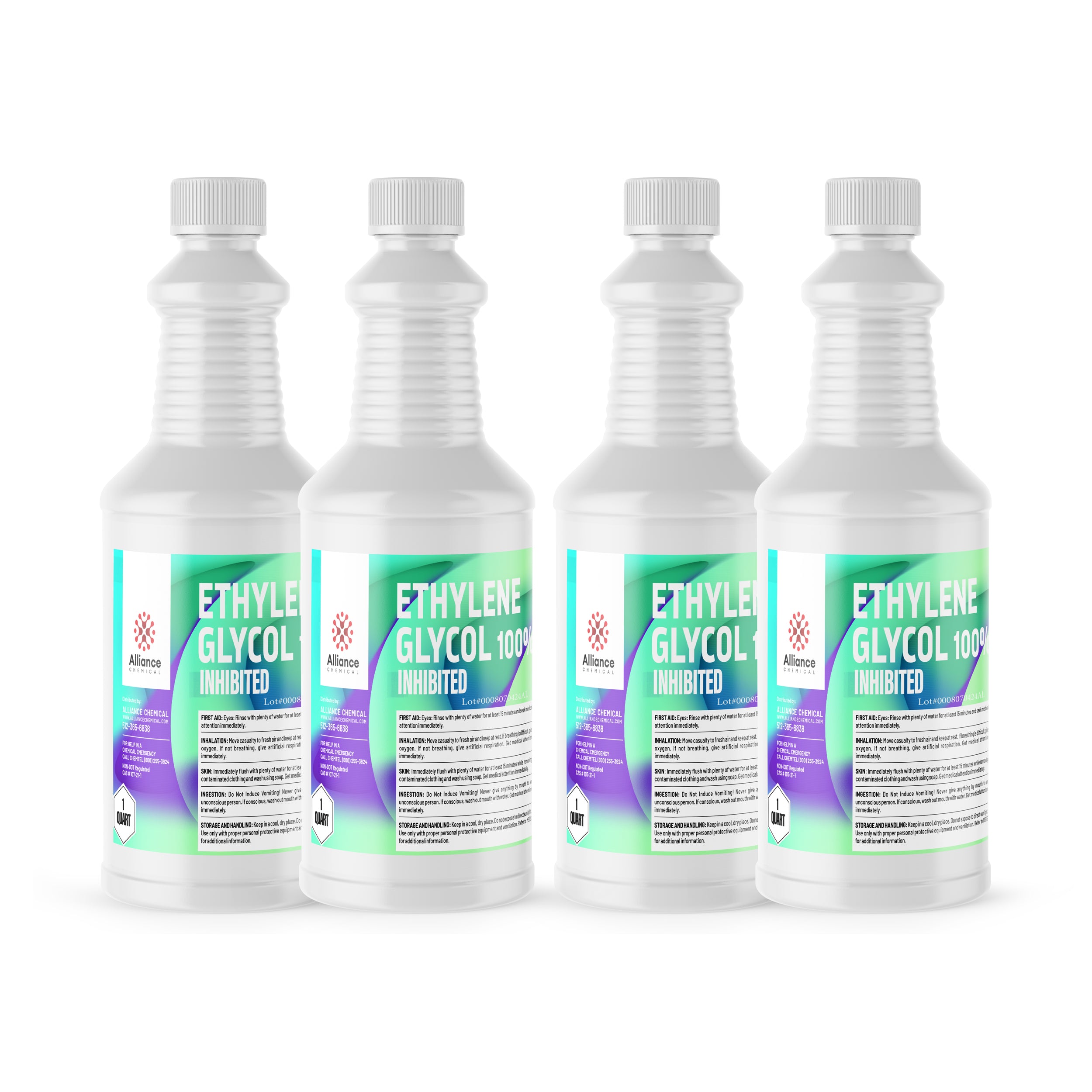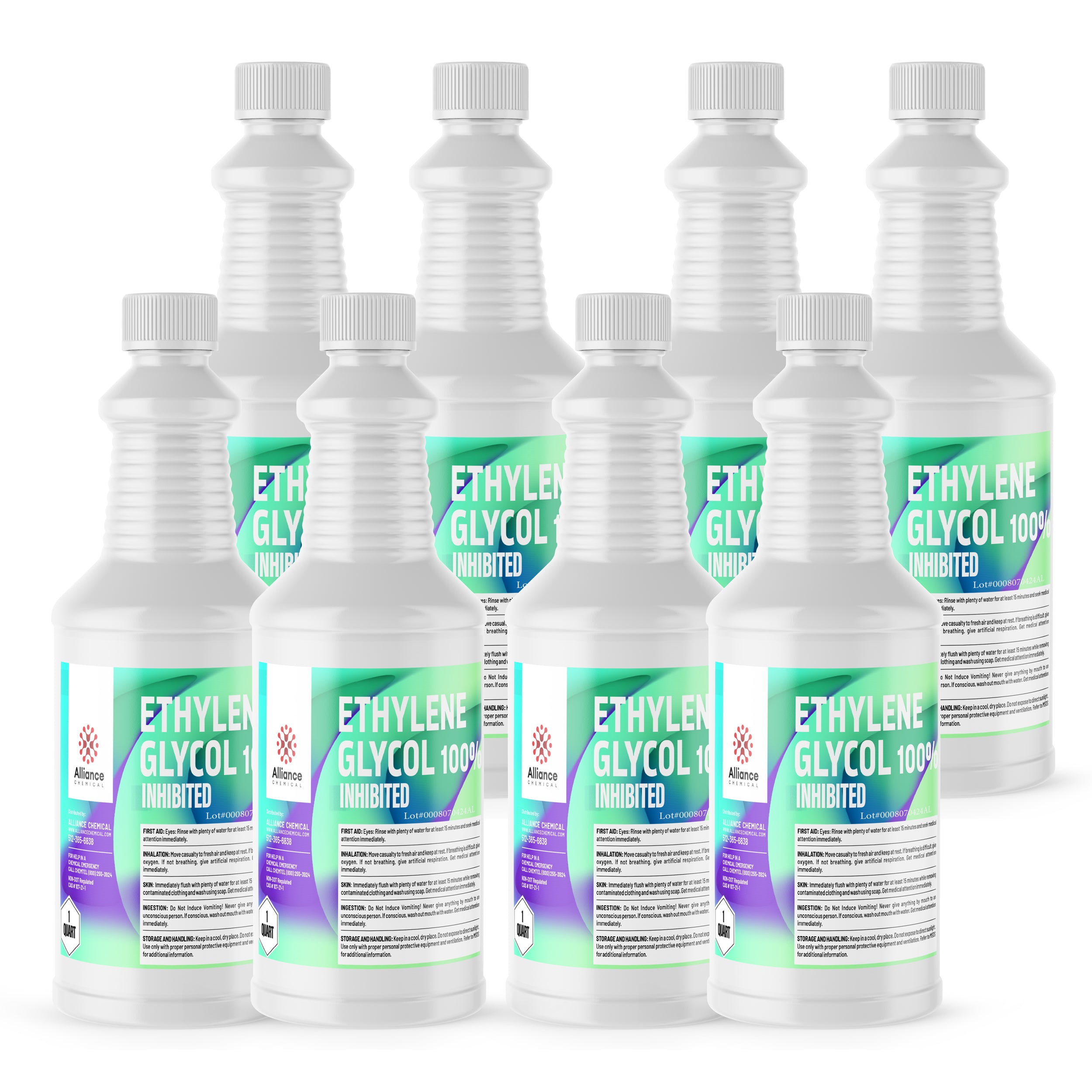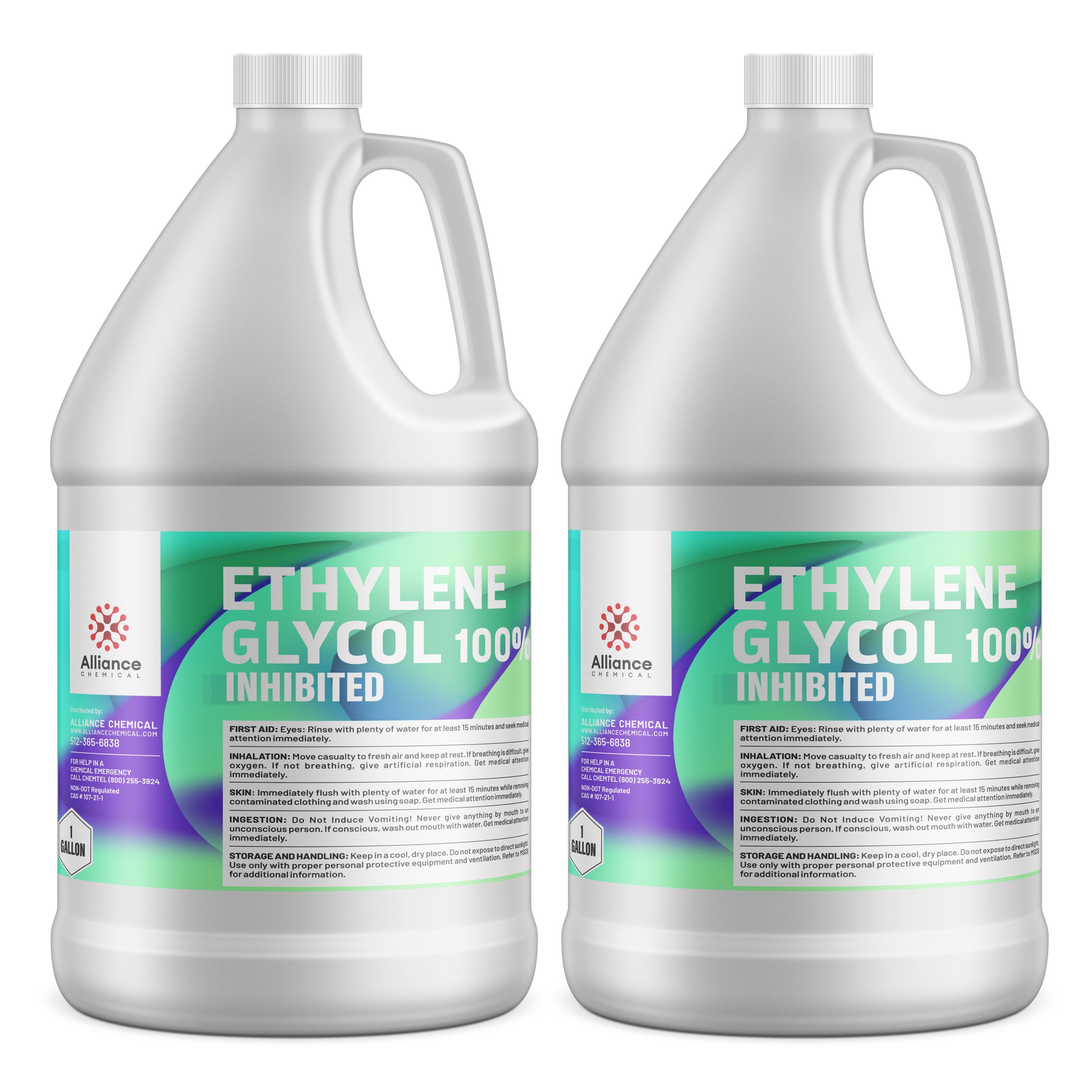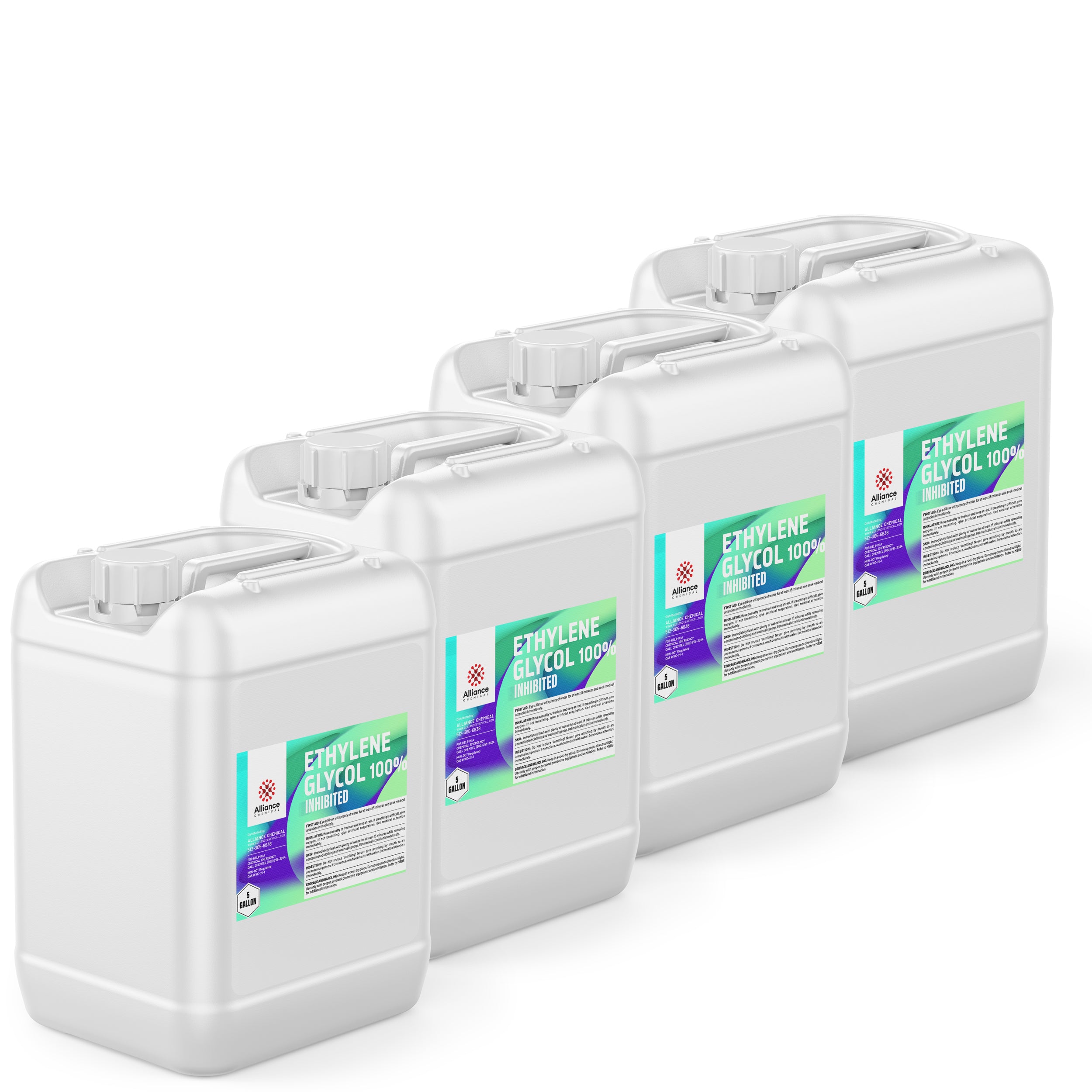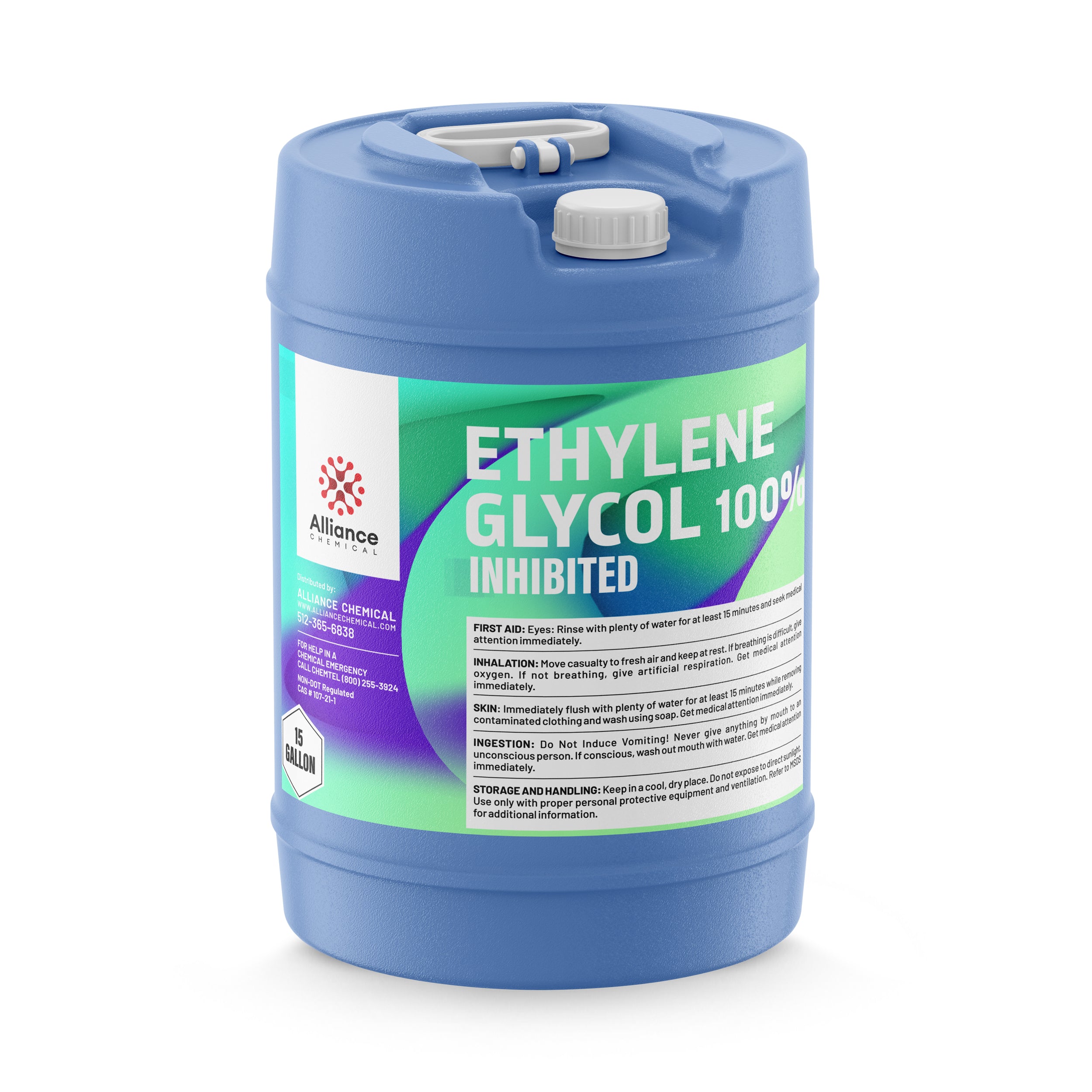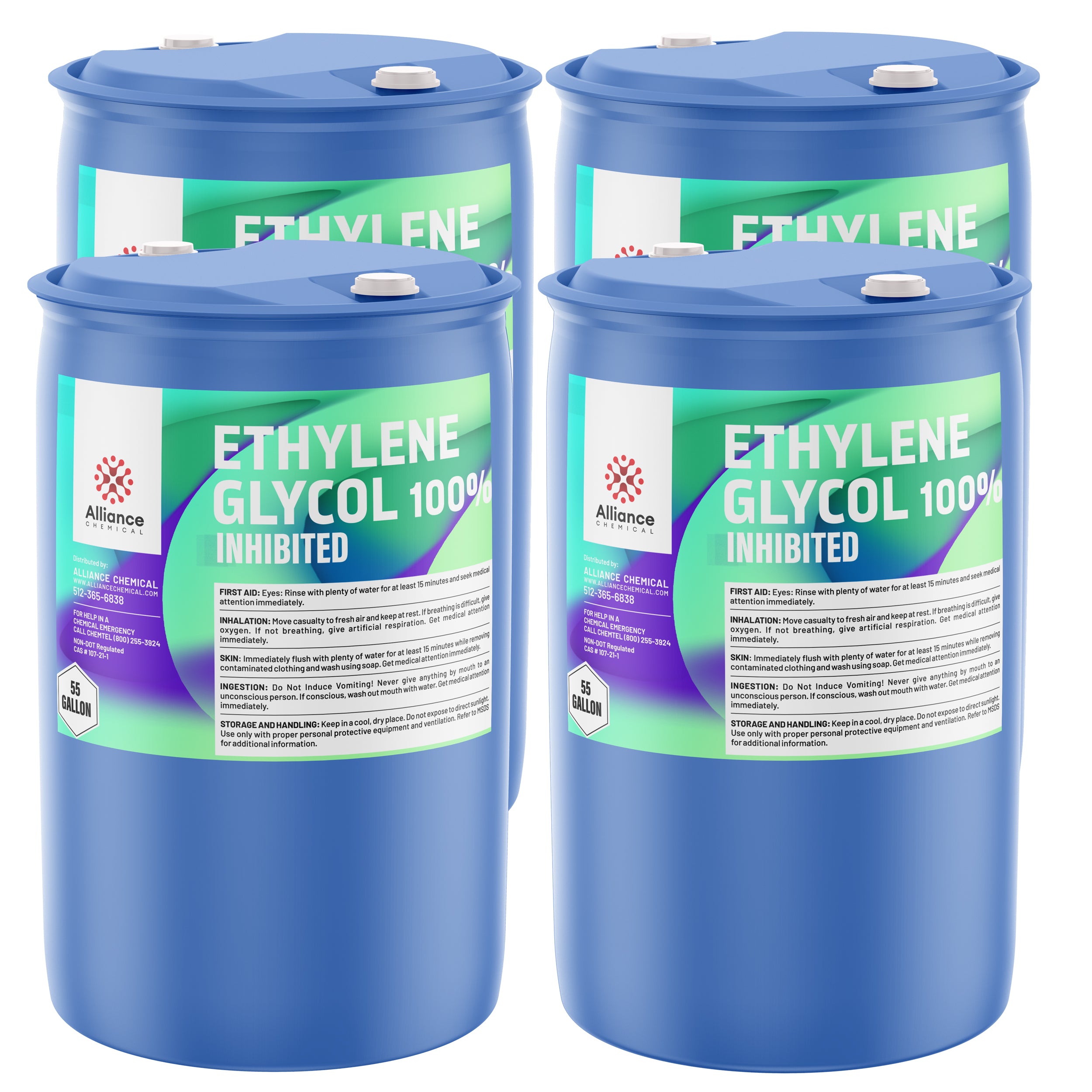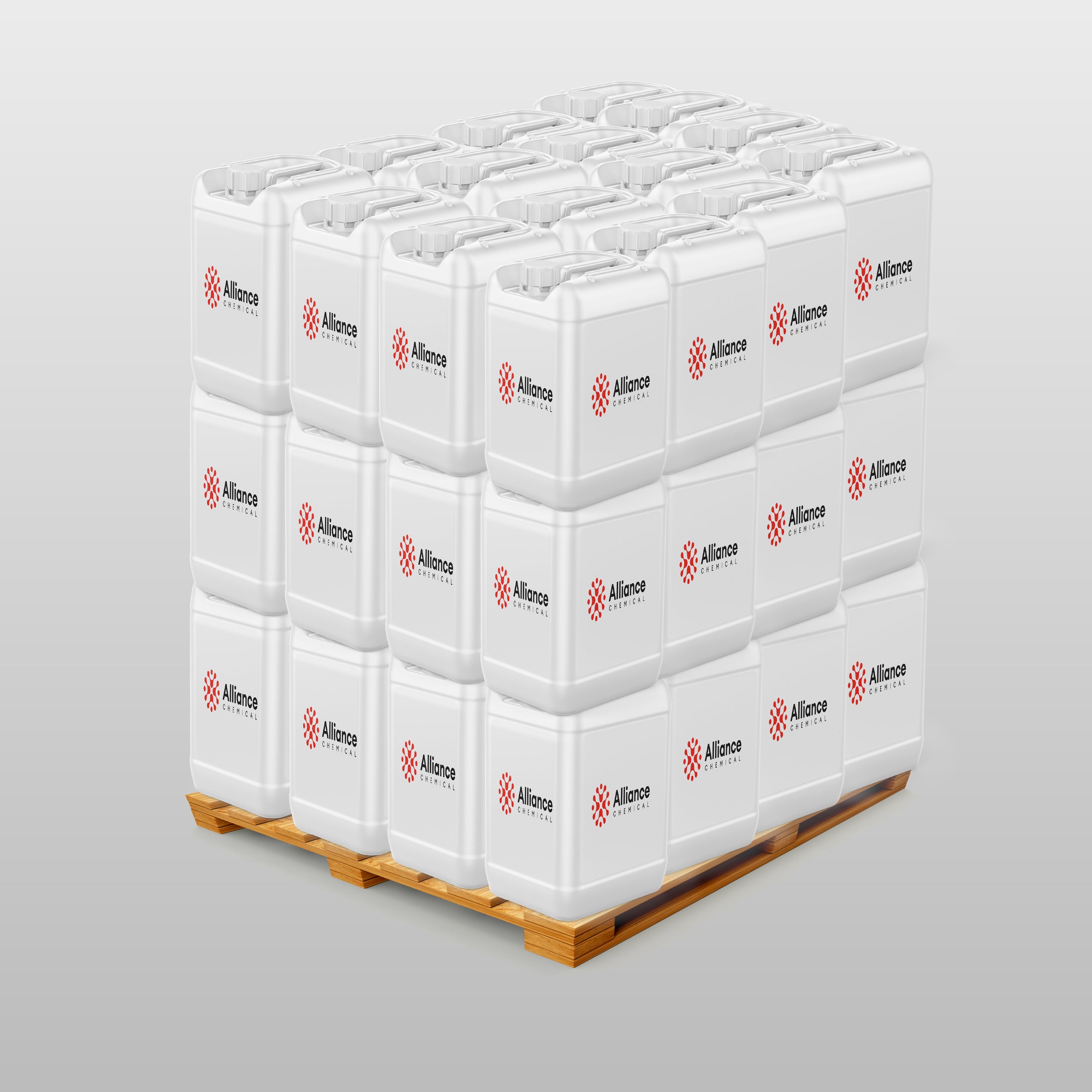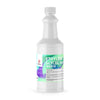Ask a question
Product Overview
100% Ethylene Glycol Inhibited is a colorless, viscous liquid with a slight, sweet odor, designed for reliability in demanding industrial environments. Its chemical formula, C₂H₆O₂, underpins its dual functionality as both an effective antifreeze agent and a versatile solvent. With a molecular weight of 62.07 g/mol and a boiling point of 197.3°C, this glycol provides robust thermal stability and predictable performance across a wide temperature range. The product is formulated with inhibitors to enhance long-term system protection, reducing corrosion and ensuring compatibility with common materials used in cooling loops, heat exchangers, and processing lines. Its ASC/USP-NF reagent-grade quality supports stringent control within chemical manufacturing, automotive, and energy sectors. Its density of approximately 1.11 g/mL at 25°C and low vapor pressure (0.06 mmHg at 20°C) contribute to steady fluid dynamics in engineered systems, while its complete miscibility with water and many organic solvents enables flexible formulation options.
In addition to its primary roles as an antifreeze and solvent, 100% Ethylene Glycol Inhibited serves critical functions in heat transfer applications, hydraulic systems, and polymer processing. The inhibited formulation helps minimize degradation and reactivity in sensitive environments, supporting equipment longevity and process reliability. This product is produced under controlled conditions to meet ACS Reagent Grade and USP-NF Monograph standards, reflecting a commitment to quality, traceability, and regulatory compliance for industrial and institutional customers.
Key Properties
- Appearance: Colorless, viscous liquid
- Odor: Slightly sweet odor
- Chemical Formula: C₂H₆O₂
- Molecular Weight: 62.07 g/mol
- Boiling Point: 197.3°C
- Freezing Point: -12.9°C
- Specific Gravity (25°C): 1.11 (range 1.10–1.12)
- Specific Gravity (20°C): 1.11 (range 1.10–1.12)
- Water Content (Karl Fischer): Max 0.25 wt% (typical 0.10 wt%)
- Residue After Ignition: Max 0.1 wt% (typical 0.05 wt%)
- Chloride (Cl⁻): Max 5 ppm (typical 1 ppm)
- Nitrate/Nitrite (NO₃⁻): Max 5 ppm (typical 1 ppm)
- Ammonium (NH₄⁺): Max 5 ppm (typical 1 ppm)
- Sulfate (SO₄²⁻): Max 5 ppm (typical 1 ppm)
- Phosphate (PO₄³⁻): Max 5 ppm (typical 1 ppm)
- Arsenic (As): Max 0.5 ppm (typical 0.1 ppm)
- Heavy Metals (as Pb): Max 0.5 ppm (typical 0.1 ppm)
- Iron (Fe): Max 0.5 ppm (typical 0.1 ppm)
- Copper (Cu): Max 0.5 ppm (typical 0.1 ppm)
- Manganese (Mn): Max 0.5 ppm (typical 0.1 ppm)
- Nickel (Ni): Max 0.5 ppm (typical 0.1 ppm)
- Lead (Pb): Max 0.5 ppm (typical 0.1 ppm)
- Zinc (Zn): Max 0.5 ppm (typical 0.1 ppm)
- Aluminum (Al): Max 0.5 ppm (typical 0.1 ppm)
- Chromium (Cr): Max 0.5 ppm (typical 0.1 ppm)
- Cobalt (Co): Max 0.5 ppm (typical 0.1 ppm)
- Calcium (Ca): Max 0.5 ppm (typical 0.1 ppm)
- Magnesium (Mg): Max 0.5 ppm (typical 0.1 ppm)
- Potassium (K): Max 0.5 ppm (typical 0.1 ppm)
- Sodium (Na): Max 0.5 ppm (typical 0.1 ppm)
- Aldehydes: Max 5 ppm (typical 1 ppm)
- pH (acidity): Measured as meq max 0.01 (typical 0)
Common Applications
- Application Category: Antifreeze Agent – Automotive: Used in automotive cooling systems to prevent freezing and overheating, delivering controlled freeze-point depression and enhanced heat transfer performance compliant with industry standards.
- Application Category: Heat Transfer Fluid – Industrial: Serves as a robust heat transfer medium in process industries, balancing viscosity and thermal stability across elevated temperatures.
- Application Category: Solvent in Chemical Reactions – Chemical Manufacturing: Acts as a solvent for diverse reactions, enabling efficient dissolution and reaction kinetics in polymerization and additive synthesis.
- Application Category: Hydraulic Fluid – Manufacturing: Utilized in hydraulic systems for lubrication and energy transmission, contributing to system reliability and reduced wear in high-load environments.
- Application Category: Plasticizer – Polymer Industry: Incorporated into plastics to enhance flexibility, processability, and durability while maintaining compatibility with standard resin systems.
Safety Precautions
Store in a cool, dry place away from direct sunlight, using materials compatible with ethylene glycol such as HDPE or stainless steel. Ensure proper ventilation to prevent vapor accumulation and minimize exposure. Use appropriate PPE including chemical-resistant gloves, goggles, and protective clothing when handling to prevent skin and eye contact. Maintain separation from strong oxidizing agents and acids to avoid reactive hazards.
In case of exposure, follow SDS-guided procedures: eyes—rinse thoroughly with water for several minutes; skin—wash with soap and water and seek medical advice if irritation persists; inhalation—move to fresh air and monitor for respiratory symptoms; ingestion—do not induce vomiting, rinse mouth and contact a poison center or physician if unwell. Transport information: UN 1180, Ethylene glycol, Class 3, Packing Group II. For spill response, utilize appropriate containment measures and absorbents, and consult the SDS for emergency procedures.
Benefits
✔ Reliable antifreeze performance – Effective freeze-point depression and high-temperature stability support dependable operation across industrial cooling systems.
✔ High purity, compatibility, and standards compliance – ACS Reagent Grade and USP-NF Monograph compliant, with traceable quality and low impurity levels ensuring process integrity.
| Property | Value |
|---|---|
| Molecular Weight | 62.07 g/mol |
| Formula | C2H6O2 |
| Assay | 100%% |
| Grade | Technical |
| Flash Point | 111 |
| Form | Liquid |
| Solubility | Fully water soluble |
| Appearance | Clear viscous liquid |
| Melting Point | -13 °C |
| Boiling Point | 197 °C |
| Specific Gravity | 1.113 |
| Industry | Industrial, HVAC, Chemical Processing, Heat Transfer, Automotive |
R5F-GCU-V01
$19.41
Unit price
Compare Products
| Price |
|---|
| SKU |
| Rating |
| Discount |
| Vendor |
| Tags |
| Weight |
| Stock |
| Short Description |

